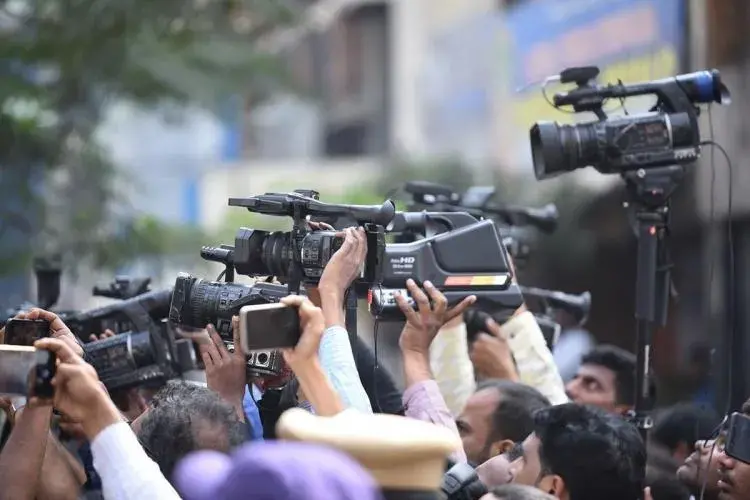The advent of the internet has transformed nearly every aspect of our lives, and the entertainment industry is no exception. Gone are the days when families gathered around the television to watch their favourite shows at a prescribed time. The rise of streaming services has ushered in a new era of entertainment consumption in India. In this blog, we will explore the evolution of streaming services in the Indian context, from the early days of cable TV to the current era of digital domination. The Cable TV Era For decades, cable television was the primary source of entertainment for Indian households. It brought a variety of channels into our homes, offering a mix of regional and international content. Cable TV allowed viewers to watch news, sports, movies, and TV shows, but it had its limitations. Viewers had to adhere to fixed schedules, missing out on shows if they weren’t home at the right time. Moreover, the content was limited, and viewers had little control over what they could watch. The Birth of DTH Services The introduction of Direct-to-Home (DTH) services in the early 2000s marked a significant shift. DTH providers offered a wider range of channels and improved picture quality. Viewers could now choose from various subscription packages, customizing their entertainment experience to some extent. However, the fundamental constraints of scheduled programming and limited content still prevailed. Also Read: Top 12 Reasons to Attend the ArdorComm ELSA Summit in Bengaluru on 22nd Sept 2023 The Streaming Revolution The real revolution began when streaming services entered the Indian market. Netflix, Amazon Prime Video, and Hotstar (now Disney+ Hotstar) were among the pioneers. These platforms allowed users to stream content over the internet, breaking free from the shackles of cable TV schedules. Netflix: Netflix made its debut in India in 2016, introducing a vast library of international and original content. Its ad-free, on-demand streaming model was a breath of fresh air for viewers tired of commercials interrupting their favourite shows. Amazon Prime Video: Amazon Prime Video followed suit, offering a mix of original series, movies, and a diverse catalogue. It also bundled its streaming service with its Prime membership, attracting a considerable audience. Hotstar (Disney+ Hotstar): Hotstar gained popularity for its sports content, including cricket matches and the Indian Premier League (IPL). The platform also featured a wide array of Bollywood and regional content. The Evolution of Regional Content One of the most significant advantages of streaming services was their focus on regional content. India is a diverse nation with multiple languages and cultures, and streaming platforms recognized the importance of catering to these differences. They began producing and showcasing regional content, including web series, movies, and documentaries, attracting a more extensive and diverse audience. Also Read: Eco-friendly Living for Better Health: How Sustainable Choices Improve Well-Being Original Content Boom Streaming platforms not only brought international content to Indian audiences but also invested heavily in producing original Indian content. Shows like “Sacred Games,” “Mirzapur,” and “Paatal Lok” became cultural phenomena. The quality of storytelling, production values, and the freedom to explore diverse themes set a new benchmark for Indian entertainment. Accessibility and Convenience One of the key reasons behind the digital domination of streaming services is their accessibility and convenience. Viewers can watch content on their smartphones, tablets, laptops, or smart TVs, anytime and anywhere. Mobile data becoming more affordable and widespread further facilitated this shift. The Rise of Competition As streaming services gained momentum, more players entered the Indian market. Disney+ Hotstar, Voot, ZEE5, SonyLIV, Jio Cinema and others offered a plethora of options. This competition not only led to a wider choice of content but also competitive pricing, benefitting consumers. Also Read: ArdorComm ‘New Normal – Education Leadership Summit & Awards 2023’ to be held at Bengaluru, Karnataka on 22nd September 2023 #ELSABengaluru #ELSAKarnataka Challenges and Future Prospects While streaming services have come a long way, they are not without challenges. The digital divide still exists in India, with rural areas lacking reliable internet access. Additionally, the rise of OTT (Over-The-Top) platforms has led to discussions about content regulation, which is an ongoing debate. In the future, we can expect further growth and innovation in the streaming industry. The integration of augmented reality (AR) and virtual reality (VR) into content consumption, interactive storytelling, and personalized recommendations will likely play a significant role. Regional content will continue to flourish, and more players may enter the market. Conclusion The evolution of streaming services in India represents a remarkable journey from the constraints of cable TV to the boundless freedom of digital streaming. The combination of accessibility, convenience, and a diverse content library has propelled streaming platforms to the zenith of entertainment in the Indian context. As technology continues to advance, we can only envision a future brimming with exciting possibilities for this ever-expanding industry. The story of streaming services is one of relentless innovation, expanding horizons, and a renaissance of storytelling, and it continues to captivate audiences across India. The author, Pratik Ghosh is associated with ArdorComm Media




